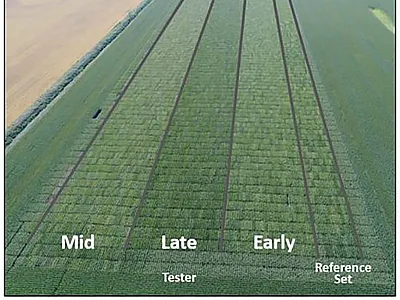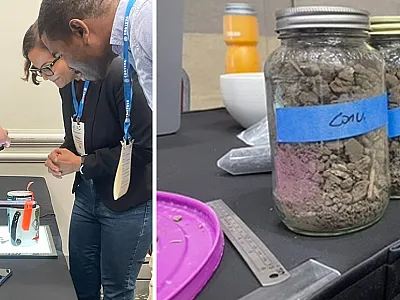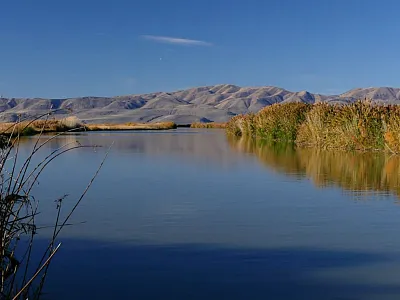Winter Wheat Response to Winter Pea Cover Crop Under Dryland Cropping
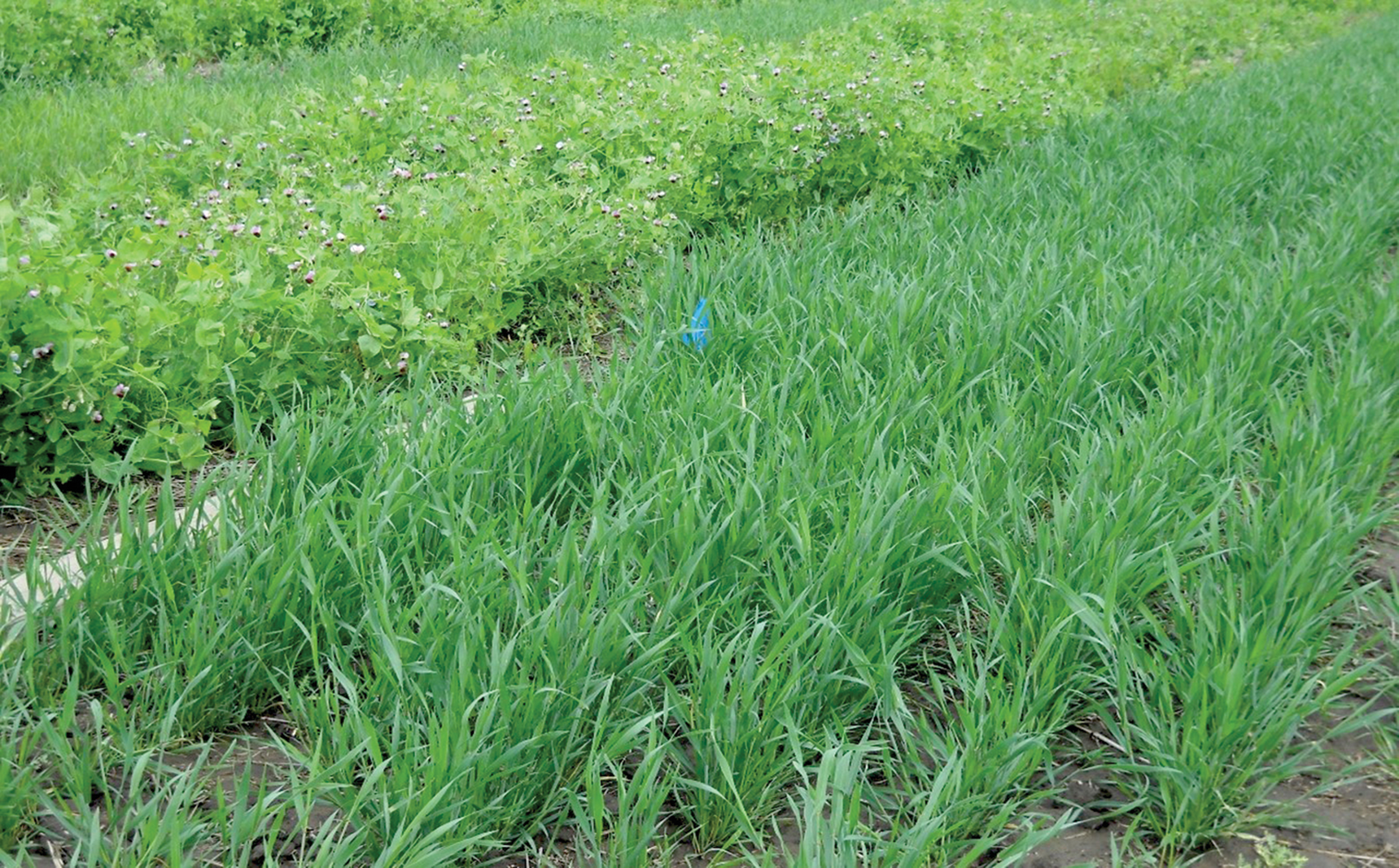

Cover cropping with legumes such as winter peas under dryland winter wheat production systems has several benefits that could improve the resiliency of production systems and agroecosystem services. This article demonstrates the use of winter pea cover crops to increase winter wheat yields in the intermediate (12–16 inch) rainfall zone and to improve drought resiliency. Earn 0.5 CEUs in Crop Management by reading the article and taking the quiz at https://web.sciencesocieties.org/Learning-Center/Courses.
Abbreviations: W-P, winter wheat–winter pea; W-F, winter wheat–fallow.
Cover cropping has been used in farming for centuries before the development of synthetic fertilizers (Hargrove & Frye, 1987). Cover cropping and choice of a cover crop should be assessed for their agroecosystem and ecological benefits and resource-use efficacy compared with monoculture. Legume cover crops such as winter peas provide several benefits that could improve the resiliency of dryland winter wheat production systems. However, it is important to assess whether the benefits of cover cropping can cover the additional expenses of implementing the practice.
Available water content for crop production depends on the precipitation zones and therefore visibility of the cover cropping. The dryland of the Pacific Northwest (PNW) under Mediterranean climates is recognized as a semiarid region with low (<12 inch), intermediate (12–16 inch), and high (16–24 inch) precipitation zones (Schillinger & Papendick, 2008). This article demonstrates the use of winter pea cover crops to shorten the fallow period in a winter wheat cropping system under long-term no-till practice to improve winter wheat yields under dryland conditions (<16 inches of annual precipitation).
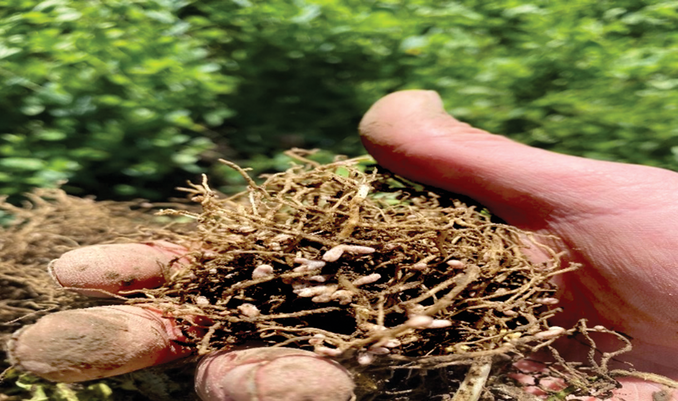
Conventional wheat–fallow with a 14-month fallow period and the use of synthetic nitrogen (N) fertilizer is a common management practice in dryland areas of the PNW. However, this practice reduces soil organic matter and associated soil organic carbon (SOC) and leaves soil susceptible to wind and water erosion, resulting in soil water and plant nutrient losses. The primary reasons for implementing winter pea cover crops were to: (1) shorten the fallow period from 14 months to 3 months to improve SOC content and (2) minimize the need for N fertilizer by taking advantage of the N-fixing ability of winter peas (Figure 1).
Experiments: Winter Wheat Under Five Nitrogen Application Rates With or Without Cover Crop
A long-term no-till experiment (NTA) winter wheat–fallow (W-F) rotation was established in 1982 at the Columbia Plateau Conservation Research Center, located 9 mi northeast of Pendleton, OR (Gollany, 2016). The experiment was a randomized complete-block design with four replications of five N rates. A second set of four replications, previously under a conventional moldboard plow tillage winter wheat–fallow rotation (Albrecht et al., 2005), was established 30 ft north of NTA in 1997 as winter wheat–fallow under no-till (NTB) (Rasmussen & Albrecht, 1998) before being converted in fall 2010 to a winter wheat–winter pea (W-P) cover crop (Gollany et al., 2021). Both phases of the rotation were present every year. Each experiment had four replications of five nitrogen fertilizer rates (0, 40, 80, 120, and 160 lb N/ac/yr) as subplots. Winter pea cover crops were terminated after flowering and before winter pea pod formation.
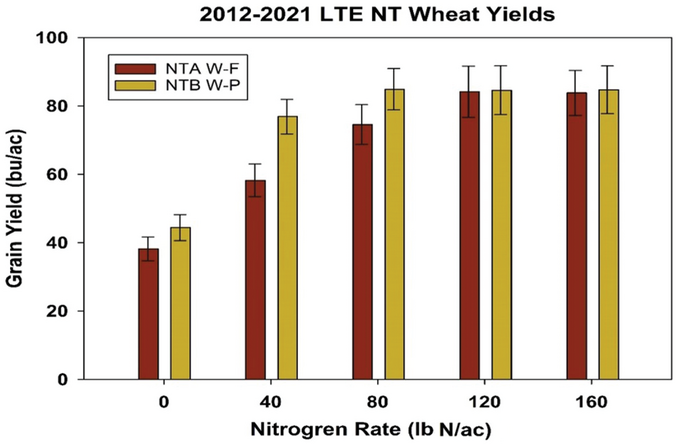
Winter Wheat Yields
Between 2012 and 2021, average wheat grain yields in the winter wheat–winter pea cover crop (NTB) increased considerably by 6, 17, and 10 bu/ac compared with winter wheat–fallow (NTA) in the 0, 40, and 80 lb N/ac fertilizer rates, respectively (Figure 2). During the past five years, further increases in wheat yields in the 40 and 80 lb N/ac fertilizer rates were observed with the winter wheat–winter pea cover crop exceeding winter wheat–fallow by 26 and 19 bu/ac, respectively. However, no significant differences in wheat yields were observed in either NTA and NTB with 120 or 160 lb N/ac fertilizer. This indicated that factors other than N availability, such as soil water content during the critical time of wheat plant development or soil pH in the fertilizer application zone under no-till, were limiting winter wheat yields under the intermediate rainfall zone.
Overfertilization without an increase in yield is a profit loss for producers and could contribute to N leaching (nitrate leaching) from soils to groundwater and rivers or to the atmosphere through gaseous emissions such as ammonia volatilization and/or denitrification (e.g., nitrous oxide emissions).
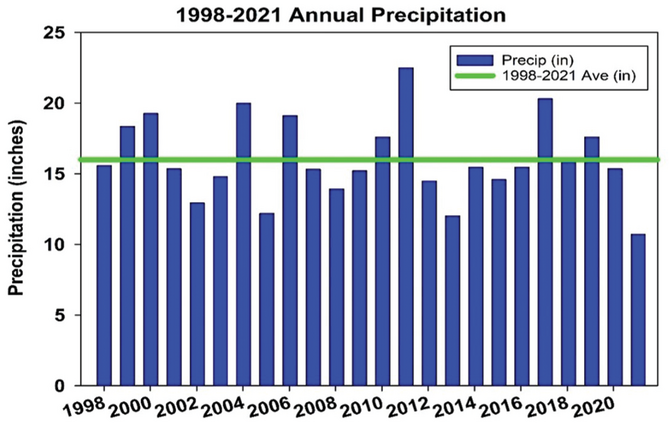
The winter wheat yield increases in the NTB plots occurred despite 8 of 10 experimental years receiving below-average precipitation (Figure 3). Wheat yields in NTB cover crop plots equaled or exceeded those in the NTA plots in wheat–fallow across all N rates, indicating that water use by the winter pea cover crop does not significantly impact wheat yields the following year.
Based on limited soil sensor data from 2017–2019, the increased winter wheat yields in the wheat–pea cover crop plots were attributed to lower soil temperature under pea canopy cover compared with bare fallow plots in the wheat–fallow rotation as well as higher soil water content during the wheat-growing stage in NTB with the winter pea cover crop compared with bare soils in the wheat–fallow rotation in NTA. Using a winter legume cover crop can be a successful management option to reduce the fallow phase from 14 to 3 months while improving wheat yields and potentially reducing synthetic fertilizer inputs in the intermediate precipitation zone of the dryland PNW under a Mediterranean climate.
Nitrogen Agronomic Efficiency
Nitrogen agronomic efficiency is a metric that includes the yield potential of an applied fertilizer that relates directly to economic return from the main crop (i.e., winter wheat) and is calculated as an increase in wheat grain yield (bu/ac) per unit of N fertilizer in pounds per acre applied (López-Bellido, & López-Bellido, 2001). For the 40 lb N/ac rate, NAE is calculated as the ratio (yield at Nx – yield at N0) divided by N\ fertilizer applied as below:
NAE for the 40 lb. N/ac applied = (17 – 6)/40 = 0.28
While NAE for the 80 lb N/ac rate was = (10 – 6)/80 = 0.05
However, no significant increase in wheat yields or NAE was observed with the pea cover crop at the 120 or 160 lb N/ac fertilizer rates. Therefore, the higher N application will not increase winter wheat NAE and economic return under limited precipitation, and N likely will be lost from the agroecosystem to the environment unless precipitation at the reproductive stage of winter wheat improves.
Legume Cover Crop and Agroecosystem Services
Legume cover crops such as winter peas provide several benefits that could improve the resiliency of dryland winter wheat production systems and agroecosystem services. Winter pea cover crop is important in N management and an integral part of improving N use efficiency (NUE) by reducing N losses to air and water bodies. Furthermore, pea cover crops can also provide effective weed suppression and reduce herbicide use, particularly during the early part of the winter wheat growing season and after cover crop termination. Therefore, legume cover crops can delay the development of herbicide-resistant weeds.
Conclusion
Legume cover crops such as winter peas improved winter wheat yields at low N fertilizer application, reducing synthetic N fertilizer use needs and providing benefits that could improve the resiliency of dryland winter wheat production systems and agroecosystem services. Winter peas are important in nitrogen management and an integral part of improving N use efficiency by reducing N losses to air and water. Winter peas can provide agroecosystem services through effective weed suppression and reduced herbicide use among other environmental benefits. At higher precipitation zones, winter peas can be used in the sustainable intensification of agriculture while reducing the soil carbon footprint from N fertilizer production.
References
Albrecht, S.L., Skirvin, K.W., & Long, D.S. (2005). Winter wheat responses to nitrogen fertilization in a direct-seed, summer-fallow management system. In S. Petrie et al. (Eds.), Dryland agricultural research annual report (Special Report 1061, pp. 87–91). Oregon State University in Cooperation with Agricultural Research Service.
Gollany, H.T. (2016). CQESTR simulation of dryland agroecosystem soil organic carbon changes under climate change scenarios. In S. DelGrosso, L. Ahuja & W. Parton (Eds.), Synthesis and modeling of greenhouse gas emissions and carbon storage in agricultural and forest systems to guide mitigation and adaptation. (Advances in Agricultural Systems Modeling Vol. 6, pp. 59–87). ASA, CSSA, and SSSA.
Gollany, H.T., Del Grosso, S.J., Dell, C.J., Adler, P.R., & Polumsky, R.W. (2021). Assessing the effectiveness of agricultural conservation practices in maintaining soil organic carbon under contrasting agroecosystems and a changing climate. Soil Science Society of America Journal, 85(5), 1362–1379. https://doi.org/10.1002/saj2.20232
Hargrove, W.L., & W.W. Frye. (1987). The need for legume cover crops in conservation tillage production. In J.F. Power (Ed.), The role of legumes in conservation tillage systems (p. 1 5). Soil Conservation Society of America, Ankeny, lA.
López-Bellido, R.J., & López-Bellido, L. (2001). Efficiency of nitrogen in wheat under Mediterranean conditions: Effect of tillage, crop rotation and N fertilization. Field Crops Research, 71, 31–46. https://doi.org/10.1016/S0378-4290(01)00146-0
Rasmussen, P.E., & Albrecht, S.L. (1998). Crop management affect organic carbon in semi-arid Pacific Northwest soils. In R. Lal et al. (Eds.), Management of carbon sequestration in soil (pp. 209–219). CRC Press.
Rasmussen, P.E., & Parton, W.J. (1994). Long-term effects of residue management in wheat–fallow: I. Inputs, yield, and soil organic matter. Soil Science Society of America Journal, 58, 523–530. https://doi.org/10.2136/sssaj1994.03615995005800020039x
Schillinger, W.F., & Papendick, R.I. (2008). Then and now: 125 years of dryland wheat farming in the inland Pacific Northwest. Agronomy Journal, 100 (S3), S166–S182. https://doi.org/10.2134/agronj2007.0027c
Self-Study CEU Quiz
Earn 0.5 CEUs in Crop Management by taking the quiz for the article at https://web.sciencesocieties.org/Learning-Center/Courses. For your convenience, the quiz is printed below. The CEU can be purchased individually, or you can access as part of your Online Classroom Subscription.
- This study was conducted to increase the fallow period.
- True.
- False.
- Winter pea cover crop can shorten the fallow from 14 months to
- 2 months.
- 3 months.
- 4 months.
- 6 months.
- Legume cover crops such as pea cover crops can improve the drought resiliency of dryland winter-wheat production systems.
- True.
- False.
- Average wheat grain yields in the winter wheat-pea cover crop (NTB) plots increased by _____ bu/ac under dryland conditions without N fertilizer application.
- 2
- 3
- 4
- 6
- Average wheat grain yields increased by ___ bu/ac in the winter wheat–pea cover crop (NTB) plots at the 40 lb N/ac fertilizer application rates.
- 13
- 15
- 17
- 21
Text © . The authors. CC BY-NC-ND 4.0. Except where otherwise noted, images are subject to copyright. Any reuse without express permission from the copyright owner is prohibited.




